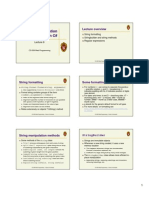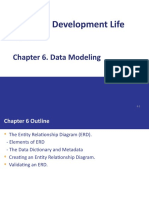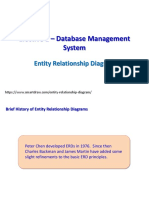0% found this document useful (0 votes)
139 views35 pagesDatabase Systems Course Guide
This document provides an overview of a course on database systems. The key points are:
1) The course will cover basic database concepts, relational database design, and developing databases using Oracle. Students will learn how to independently develop a database system.
2) The document defines database terminology and outlines the objectives of understanding database growth, limitations of conventional file processing, database categories, and relational database advantages.
3) By taking the course, students are expected to understand database concepts and design, and be able to develop a database using Oracle forms and reports.
Uploaded by
Rimsha AwanCopyright
© © All Rights Reserved
We take content rights seriously. If you suspect this is your content, claim it here.
Available Formats
Download as PPT, PDF, TXT or read online on Scribd
0% found this document useful (0 votes)
139 views35 pagesDatabase Systems Course Guide
This document provides an overview of a course on database systems. The key points are:
1) The course will cover basic database concepts, relational database design, and developing databases using Oracle. Students will learn how to independently develop a database system.
2) The document defines database terminology and outlines the objectives of understanding database growth, limitations of conventional file processing, database categories, and relational database advantages.
3) By taking the course, students are expected to understand database concepts and design, and be able to develop a database using Oracle forms and reports.
Uploaded by
Rimsha AwanCopyright
© © All Rights Reserved
We take content rights seriously. If you suspect this is your content, claim it here.
Available Formats
Download as PPT, PDF, TXT or read online on Scribd
/ 35

























































































